Dough You Love Me: A Laminated Pastry Dough FAQ and a Daring Bakers Challenge
 Sunday, June 29, 2008
Sunday, June 29, 2008
You say that Danish Dough is a laminated dough. What precisely does that mean?
According to Baking911.com, "Laminated Dough" is made by encasing butter in dough, and taking it through a series of folds, rolling and turns to produce layers of butter in between sheets of dough. The leavening in these doughs is mainly derived from the steam generated by the moisture from the butter--the laminated fat traps water vapor and carbon dioxide formed during baking, and as steam expands in the oven, it lifts and separates the individual layers.
Additionally, as smart and cute Cakespy reader E-Dizzle clarifies:
There are three basic laminated doughs: Puff pastry has no yeast, and is used to make yummy things like palmiers, cheese twists and any sort of super-flaky tart or crust. The dough itself isn't sweet, so it can be used for sweet or savory pastries.
Croissant dough and danish dough are very similar, both containing yeast. But croissant doughs are considered very "lean" (crazy, I know) because the detrempe (which I just call "the doughy bit") has only flour, salt, water and yeast. Danish dough, however, is considered "rich" because it contains eggs and dairy, and sometimes sugar.
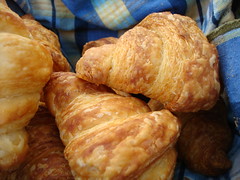
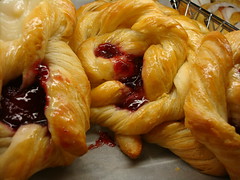
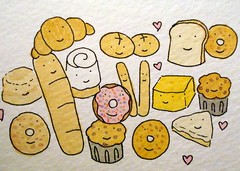 If they were to have a faceoff, which would win--puff pastry or danish dough?
If they were to have a faceoff, which would win--puff pastry or danish dough?
Really, would you ask us to choose between a flaky puff pastry or a delicious Danish? Apples and oranges, we tell you. Surely here's enough room in the world for all sorts of dough. Vive le carbohydrate!
What are some examples of pastries made with Danish Dough?
Well, the Danish, naturally--but pinwheels, envelopes and turnovers are frequently made using this type of dough. Also, though not always, a lot of kolache recipes call for a Danish-y dough.
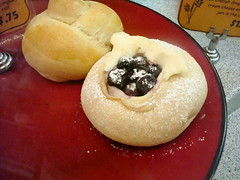 Whoa, sidebar: what's a kolache?
Whoa, sidebar: what's a kolache?
Can puff pastry and Danish Dough be used interchangeably?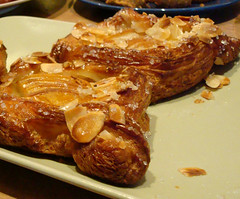
Why does it take so long to make my own dough?
 daring baker,
daring baker,  faq
faq 









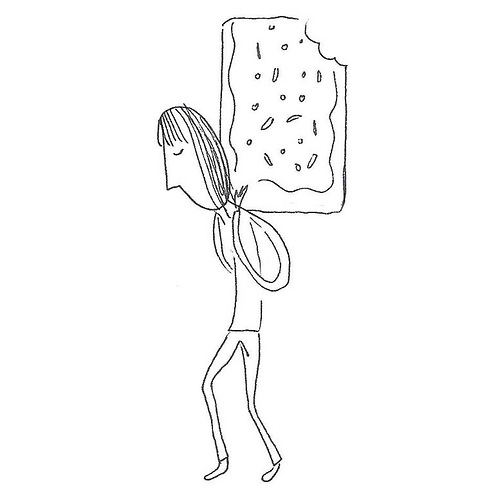


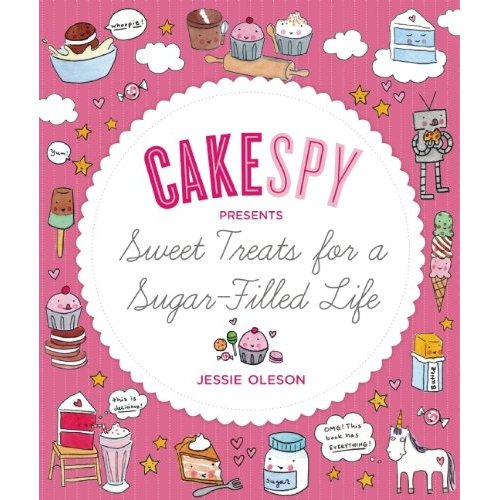
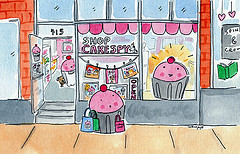





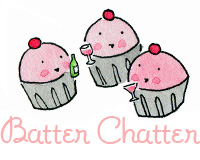




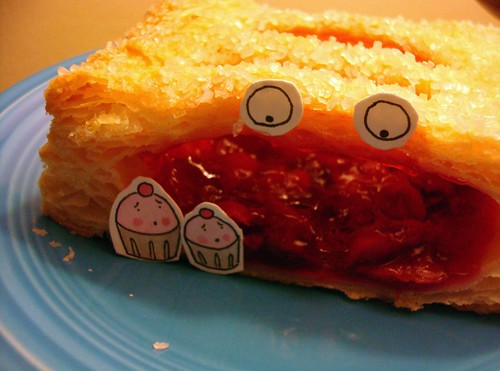
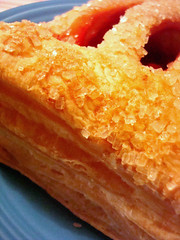
Reader Comments (57)
Vive le carbohydrate indeed! This was a great post :)
The flakiness of your dough is the envy of all the world! I love it. If I could, I would take it to bed with me and sleep with it under my pillow - except I would have devoured it before that... Just gorgeous, all of it!
Looks amazing, I love all your drawings as well! They are so cute,and yes who could choose between puff pastry and danish dough! Too difficult!
Aww that first photo is so cute!Homemade is always best!
This is one of the most tasty thing i ever tasted. Wow, i'll be showing this to all my friends and family members.
That is one flaky danish you ended up with, and I love the sugar on top. Looks delicious.
Thanks everyone! Yes, indeed the sugar on the top was...well, the icing on the cake. It gave such a satisfying crunch.